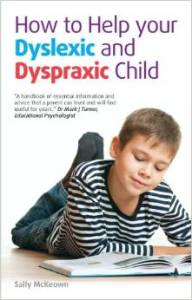Harry is making slow progress at school and his parents are being told that he should try harder. But has he got dyslexia? Sal McKeown offers advice on how to spot the warning signs
Up to 10% of the population has dyslexia and it affects three times as many boys as girls. Only a specialist teacher or educational psychologist can tell if your child has dyslexia or another specific learning difficulty such as dyspraxia but look out for these signs.
- Does your child use one hand for writing, for using a toothbrush or a pair of scissors or is he inconsistent? Most children have become decidedly left or right handed before they go to school but children with dyslexia may take longer. They may also be right handed but left footed.
- Does your child have problems pronouncing particular words? Children with dyslexia can find it hard to divide a word into chunks and put the parts in the right order.
- Does your child have a problem with sequences? Some children with dyslexia cannot get the days of the week in the right order and if you give them three things to do they might manage two.
- Does your child take a long time to answer a question and seem hesitant? In a child has a processing difficulty, the brain takes longer to sift the information, although the answer might be exceptionally good.
- Does anyone in your family have dyslexia? In about 70% of cases someone else in the family has similar symptoms.
Many successful people with dyslexia, such as Richard Branson and Eddie Izzard, are known for their creativity and originality and it is now thought that the brain of someone with dyslexia processes information in different ways.
Inventor Tom Pellereau secured a £250,000 business investment from Lord Sugar on the Apprentice in July 2011. He wrote the Preface to How to Help your Dyslexic and Dyspraxic Child in which he talks about the impact dyslexia has had on his life.
‘My dyslexia has been a big influence in my life and success as an inventor. I seem to see things differently to others and create many solutions that may not have been thought of before. I find visualising simple. When I have an idea, I can picture it in my brain and spin it around.’
He believes that his experience of having dyslexia has also made me very tenacious and hard working. He found school hard work and this taught him to be tenacious and try to find different ways of doing things.
‘With the ever increasing improving technologies that help spelling, reading, grammar, memory and other things many of the previous dyslexic hurdles are being removed,’ aid Tom. ‘In tomorrow’s world creativity and attitude will be the key to success. These are areas that dyslexics can excel at and I believe there has never been a better time to be dyslexic.’
How to Help your Dyslexic and Dyspraxic Child by Sal McKeown with a Foreword by Tom Pellereau is published by Crimson Publishing.

